By Phil Zimmer
The November 21, 1944, daylight flight of Teddy’s Rough Riders was anything but routine for American pilot Werner G. Göring, nephew of Nazi Reichsminister of Aviation Hermann Göring [Editor’s Note: see a reader’s comment below regarding Werner Göring], and the other nine men on the ill-fated B-17 Flying Fortress. Before the day was over, the plane had flown some four hours eastward in an armada of 1,291 bombers to strike Leuna, a large chemical complex lying deep inside Germany. The plane suffered nearly fatal damage from fierce air defense fire from a German 88mm gun, like the Fliegerabwehrkanone (FlaK), along with other anti-aircraft guns. As they worked their way back toward safety in England, the two port engines began smoking and had to be shut down and the two remaining engines cranked up as much as possible to keep the Fortress in the air.
Fuel was running desperately low as Göring ordered his crew to sit tight as they flew low over the icy English Channel. As they approached the base at Molesworth, the heavy Fortress was grossly underpowered and intermittently stalling. The plane had been vibrating wildly in the air, but it eventually skid to a stop after spinning in circles across a grass strip adjacent to the main runway. The crew had managed to return safely from another trip over Germany despite having suffered tremendous damage, including more than 245 holes, mostly caused by the fierce ground fire over Leuna.
25 Lost, 567 Damaged. But From What?
Others were not so fortunate. Twenty-five of the 1,291 bombers sent out that morning never returned and another 567 were damaged, largely from antiaircraft fire. The Luftwaffe was a shadow of its former self at that point in the war, but German defense—bolstered by the 88s and larger guns—was credited with destroying 6,400 Anglo-American planes and damaging 27,000 others in 1944 alone.
The 88 earned its reputation as the best overall gun of the war. It was justifiably feared by Allied airmen, tankers, and foot soldiers because of its accuracy, lethality, and versatility. The weapon was deployed on German tanks, as an antitank gun, an assault gun, and for antiaircraft purposes.
The gun was aptly described as “anti-everything” by one infantryman. The weapon even grudgingly made it into American comics during the war with cartoonist Bill Maudlin showing character G.I. Willie angrily telling an officer, “I’ll let you know when we capture the inventor of the 88.”
The Origins of the German 88mm Gun
The German 88mm gun’s lineage can be traced back to late 1916 when the German Army first adapted the established German naval weapon for ground warfare in World War I. Machinery for producing both the barrels and the ammunition was readily available at the production facilities of both Krupp AG and Rheinmetall. The German Kriegsmarine had adopted the gun largely because a round of 88mm ammunition was considered the largest and heaviest (about 34 pounds) that a single man could handle.
The World War I model could fire a 9.6 kilogram high-explosive to a height of 6,850 meters, with a maximum range of 10,800 meters. Even then the Germans relied on rudimentary trailers, stabilized by folding outrigger arms on each side, pulled by tractors to give the guns a great degree of mobility. By late 1918 the Germans had even implemented rudimentary forms of centralized fire control for the weapon. (Take an in-depth look at the Great War and all the moments that defined our history inside Military Heritage magazine.)
At the end of World War I, the Versailles Treaty brought stringent sanctions on the German military and industrial complex, especially on Krupp and Rheinmetall. Both firms established relationships with foreign companies, enabling research and development to continue away from the vigilant Versailles inspectors. By 1933 the first few examples of the updated 88 were in the hands of the Wehrmacht. The fullscale production of the officially designated 88mm FlaK 18 was underway by early 1936. The 18 was used in the name designation in an effort to mislead the treaty observers into believing that the design was a mere copy of the 1918 model.
Design Improvements (And Significant Setbacks) Throughout the 1930s
In reality, the updated weapon was a dramatic step forward. Initially designed to strike down bombers, it was semi-automatic with the gun’s recoil used to eject the spent cartridge case and cock the firing mechanism. The next round could be inserted by hand or with a powerassisted rammer. The highly mobile axle bogies could lower the cruciform firing platform for more stabilized firing. The barrel could be swung a full 360 degrees, and a trained gun crew could fire upward of 20 rounds per minute.
That FlaK 18 had a one-piece barrel with an expected service life of 900 rounds using cordite-type propellant and projectiles employing copper driving bands. This short barrel life would necessitate the replacement of barrels under field conditions. Rheinmetall came up with a three-piece barrel solution, enabling field technicians to simply replace the center section, which endured the most firing punishment. The use of the small sections of the inner tube eliminated what would have been severe maintenance, servicing, and field supply problems.
The introduction of the three-piece barrel, called the RA 9, did present other unforeseen difficulties. For one thing, high-priced and scarce steel needed to be used because the new barrel lacked the rigidity of the earlier one-piece construction. Closer machining tolerances also were required, which necessitated additional man hours in construction, and the heavier barrel resulted in carriage component changes in the recoil and equilibrator mechanisms. Eventually a two-section inner barrel was introduced to lessen wear and tear and decrease incidents of shell jamming.
The use of the RA 9 and the modified carriage resulted in the 88mm FlaK 36. As the war progressed, the use of such propellants as Diglycol and Gudol lessened barrel wear. The eventual replacement of copper driving bands by sintered iron bands also lessened wear compared to the more expensive and hard to find copper. These developments increased barrel life to 6,000—and in some cases to 10,000— rounds, eliminating the initial reason for the multi-barrels. But the German production lines could not be easily changed, so the Nazis continued to produce the expensive and time-consuming multi-barrels until the last year of the war when a plant in Pilsen was able to produce a monobloc barrel using a novel vertical centrifuge casting process.
A Case of ‘The Clanks’
The updated German 88mm FlaK 37 guns added a rather sophisticated (for the time) fire-control data display unit. This antiaircraft gun initially was to be used in the defense of the homeland, although 90 FlaK 37s were sold to Finland for defense against Soviet air raids. And nearly 200 of the guns fell into Norwegian hands when the Germans departed that country.
All three models of the early 88s were 56 calibers long, meaning the barrel length was 56 times that of the 88mm caliber. The standard gun fired a 17-pound shrapnel grenade that could climb thousands of feet into the air and then burst into 1,500 or more shards that could damage or destroy any plane within 200 yards.
The antiaircraft shells had two types of fuses: those with barometric fuses set to specific altitudes and those with time-delayed fuses. No matter what triggered them, the jagged steel fragments could easily decapitate or dismember one or more members of a flight crew. The results of such an attack could be devastating even for those who survived the battering. Many became afflicted with “the clanks,” a paralyzing sense of dread, and became known as “dead men flying.”
In the first half of 1944 casualty rates for every 1,000 bomber crewmen serving six months in combat included 712 killed or missing and 175 wounded, for 89 percent. Barely one in four U.S. airmen completed 25 missions over Germany, and that minimum quota was raised to 30 missions then 35 after the liberation of France and Belgium.
For antiaircraft work, the FlaK 18 and 36 had a fuse-setting device on the left side with a slightly different device on the 37. The nose of the projectile was inserted into a cup at the top of the machine that would automatically set the fuse based on information from the target data transmission. Once set, the projectile was forced out of the device for loading. Later in the war, some FlaK 37 guns had the fuse setter located on the loading tray, speeding up the process; and, if necessary, time fuses could be set by hand with a special key by a member of the gun’s 11man crew.
Deadly Effective “AP” Rounds
The figures for the German 88mm gun vary a bit for the first three models, considering the specific model and the training of the crew. It could fire 15 to 20 rounds per minute, and even with a diminished six-man crew, the gun could be put into action within 21/2 minutes. The same small crew could prepare the gun for movement within 31/2 mintes. The maximum range was 14,860 meters and the maximum vertical range was given at 10,600 meters.
As the gun’s use expanded to other roles so did the different types of rounds employed by the Nazis. A 1944 German ordnance listing includes 19 different rounds. That includes eight types of high-explosive (HE) rounds and seven armor-piercing (AP), with the rest being kineticenergy solid projectiles. The HE rounds employed two types of fuses. When used in an antiaircraft capacity, clockwork time fuses were employed. By the end of the war, a percussion element was added to the clockwork fuse mechanism. For use against ground targets, either type of fuse was used, with the clockwork mechanism able to produce deadly airbursts over Allied positions.
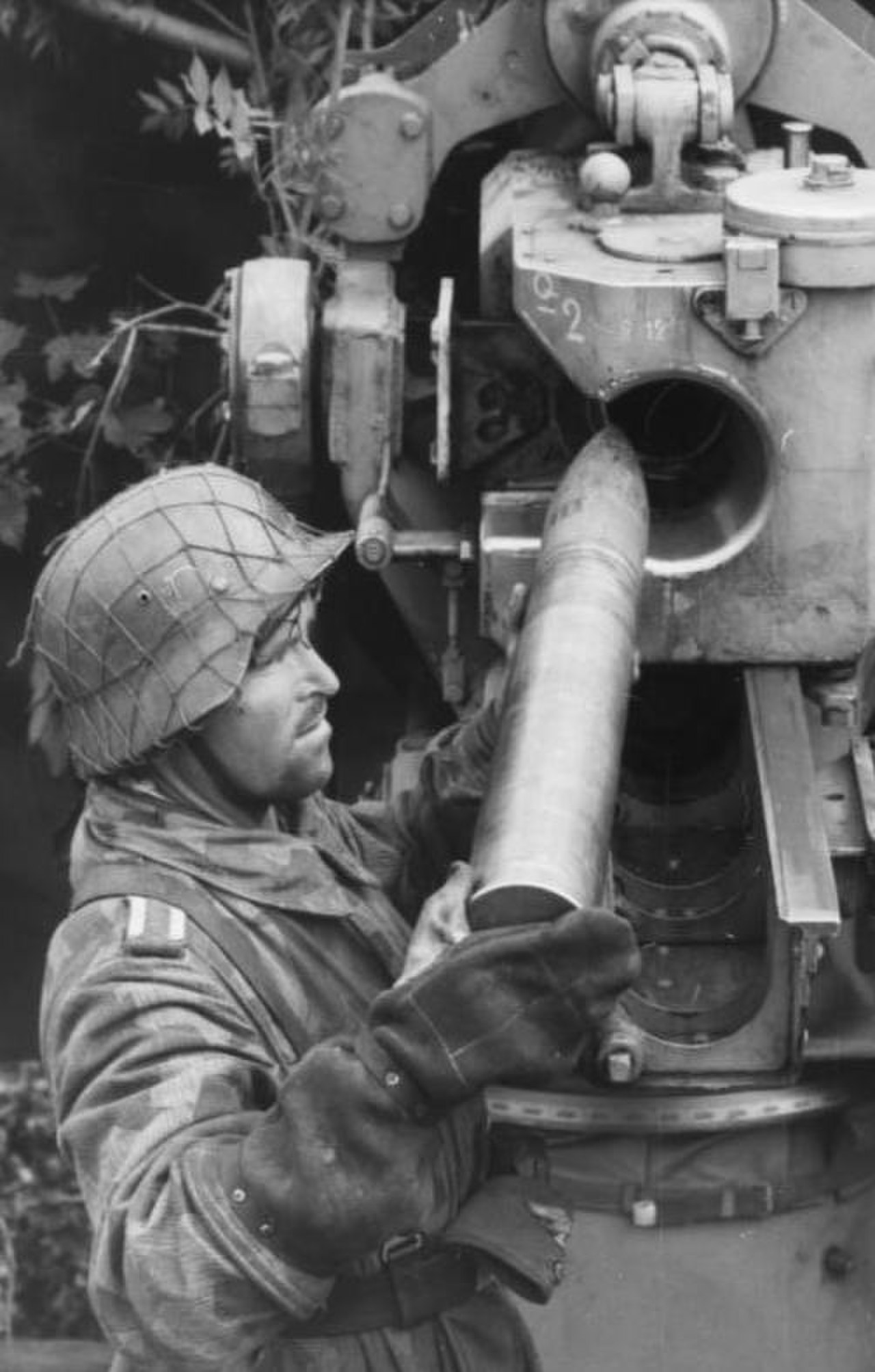
The AP rounds also proved deadly effective. Once the projectile penetrated the target, a small bursting charge was ignited by a delayed percussion fuse that had a tracer element in its base. The tracer aided the gunner and the delayed fused helped create mayhem inside the target. Not fully satisfied with that, the Germans went on to produce the AP40 rounds for use with antitank and tank guns. These used tungsten carbide penetrator slugs minus a bursting charge that carried more energy for their weight and size. Fortunately for the Allies, use of the AP40 rounds was restricted by the limited supply of tungsten carbide.
The basic AP round used chemical energy rather than kinetic energy. The round used the hollow-charge principle to penetrate armor with an exceptionally high temperature jet formation that burned its way into the target. Most of these rounds were largely used by the feared Tiger I tank.
Mounting the 88 Onto the First Tigers
The Germans developed the Sd Kfz 7, a semitracked vehicle, to haul the 88s on their Sonderanhanger 201 trailers. This specially designed vehicle was basically an artillery tractor, with tracks on the back and traditional tires on the front steering axel. The tracks provided cross-country mobility, contributing greatly to the usefulness of the 88, especially on the poor roads of the Eastern Front that were often no more than muddy paths.
The Germans were so impressed with the 88 that as early as 1936 plans were afoot to mount the weapon on a tank that eventually became the Tiger I.
While the ballistics of the German 88mm KwK 36 tank gun and antiaircraft guns were identical, the tank gun had a one-piece barrel and a thin jacket. Like other German tank guns, the breech block used a vertical sliding action in place of the horizontal sliding block used on the antiaircraft guns. The recoil mechanism was different and there was a double-baffle muzzle brake to lessen stress on the vehicle.
The trigger on the tank was repositioned from the breech block to the gunner’s elevated hand wheel. The heavy and well-armored turret was slow moving, adding to the tank’s ponderous reputation. The rounds were the same as used on the FlaK 18-37 series of antiaircraft guns, except for the use of the electrical primers that relied on a 12-volt vehicle battery. Some 92 rounds could be carried around and under the turret, although crews often did manage to store additional rounds.
The accuracy and distance of the Tiger I’s 88 gun often resulted in a “one shot, one kill” ratio for the Germans against Allied tanks and their crews.
The size and the weight of the 63-ton Tiger, coupled with its somewhat underpowered V-12, 700 horsepower Mayback engine hindered mobility and usefulness on the battlefield, despite its fearsome gun.
A Self-Propelled Gun With 360-Degree Maneuverability
The Germans also used the 88mm gun as a self-propelled gun. That further improved its mobility and increased its usefulness for close-in support for ground troops. This resulted in the Selbstfahrlafette with armor protecting the engine and driver. Six of these tank hunters were used successfully in the battle for France. However, the vehicle proved top heavy and provided very little space for the crew to operate the gun. There was limited movement in the gun, little space for carrying ammunition, and no provision for outriggers to stabilize the gun when firing. These were succeeded by the Zugkraftwagen 18t, a larger, more powerful and more heavily armored vehicle that could travel at 40 kilometers per hour. The gun on that vehicle could be elevated and swung 360 degrees for anti-aircraft use. It came with outrigger legs and a more accommodating firing platform for the crew.
Initial plans called for 112 units, but only 14 were produced by June 1943 when production ceased when other programs were given greater priority. As Germany’s military prospects continued to diminish, additional prototypes appeared, included one mounted on a converted bus chassis. The few that were actually produced were rushed to the Eastern Front in an effort to slow the advancing Red Army.
The 88 also was mounted on railway cars and used there in antiaircraft roles. In some cases, full railway batteries were positioned in the railroad yards. The Germans also mounted the guns on the Siebel Ferry, a shallow draught, twinhulled craft. These floating gun platform-ferry combinations proved quite effective and were used in the successful evacuation of two German divisions and all their equipment from Sicily.
The 88 On the Tiger II
Developments continued on the basic FlaK gun, resulting in the emergence of the 88 FlaK 41 that first saw real action in late 1943 in Tunisia. The barrel had been lengthened to the point that it had five main components. The multi-segment barrel initially presented difficulties similar to early multi-barrels. The gun proved to be a significant improvement on earlier models, despite its complexity and high cost of production. The number of barrel segments was first reduced to four and then to three in an effort to reduce jamming. The gun’s maximum ceiling was 19,800 meters from 10,600 meters.
The German 88mm FlaK 41used an 858mm long cartridge, significantly longer than the cartridge used by its predecessors. The FlaK 41 was used primarily for air defense in the West, so its anti-armor use was limited. The Germans found that it could outperform the older but larger caliber 10.5cm FlaK 38 and 39 heavy antiaircraft guns.
The Germans also designed an 88 PaK 43 as a dedicated antitank weapon, with the first ones coming off the production lines by the end of 1943. It soon became widely recognized as perhaps the best all around antitank gun of the war. It could easily provide firepower in a full 360degree traverse and it could penetrate the frontal armor of any Allied tank on the field. The gun’s distinctive, heavily sloping front armor could deflect most oncoming rounds. The barrel was produced in two segments and the breech was semi-automatic. The gun’s maximum possible range was 15,150 meters, enabling it to be used as a supporting field gun in addition to its antitank role.
The 88 PaK 43 was modified and placed on the Tiger II tank. This feared tank was designed to hold 40 HE and 40 AP rounds, and it first saw action in early 1944 on the Eastern Front. The Tiger II weighed in at nearly 69 tons—substantially heavier than its predecessor—yet it was still powered by the same Mayback engine, causing concern among the German military because of the Tiger II’s lack of speed, mobility, and exceptionally high fuel consumption. Because of those limitations, toward the end of the war it was used more in a defensive role.
Anti-Aircraft to Anti-Tank
The PaK 43 also was employed as a self-propelled gun in a number of forms, including the Nashorn (Rhinoceros) and the Ferdinand. The latter was rushed into service for the Battle of Kursk in 1943 where 89 were reportedly used. The Ferdinands destroyed some 200 Soviet tanks, according to some reports, despite initial design flaws. The survivors of the fierce Kursk fighting were extensively rebuilt and were rebranded as the Elefant.
The PaK 43 was also placed on the Panzerjager Panther—or Jagdpanther—a fast-moving tank killer. It weighed in at 46 tons, could store up to 60 rounds, and could travel at speeds of 48 kilometers per hour. Fewer than the 425 units produced were actually delivered, but the Jagdpanther was pressed into action on all fronts where it earned the grudging respect of the Allies.
Interestingly, both Britain and the United States had guns with somewhat similar antiaircraft capabilities as the 88 FlaK. Both the British 94mm and the American 90mm could fire higher and loft larger projectiles. On paper they could outperform the German gun, many contend. Both weapons, though, were bulkier and heavier. The Allies restricted those guns to their initial antiaircraft roles, while the Germans expanded the 88’s role to antitank and against fortified ground positions. This, in turn, led to other advances in terms of power rammers, fuse-setting devices, and improved ammunition handling systems—-all of which made the weapon far more versatile and effective.
The German’s flexible and innovative approach to the initial 88 FlaK permitted them to learn and adapt as the war progressed, improving the antiaircraft fire capabilities of the weapon and they successfully modified it for tank, antitank, and related ground roles. This contributed greatly to the 88’s lasting reputation as the legendary large gun of World War II.
Originally Published March 8, 2016
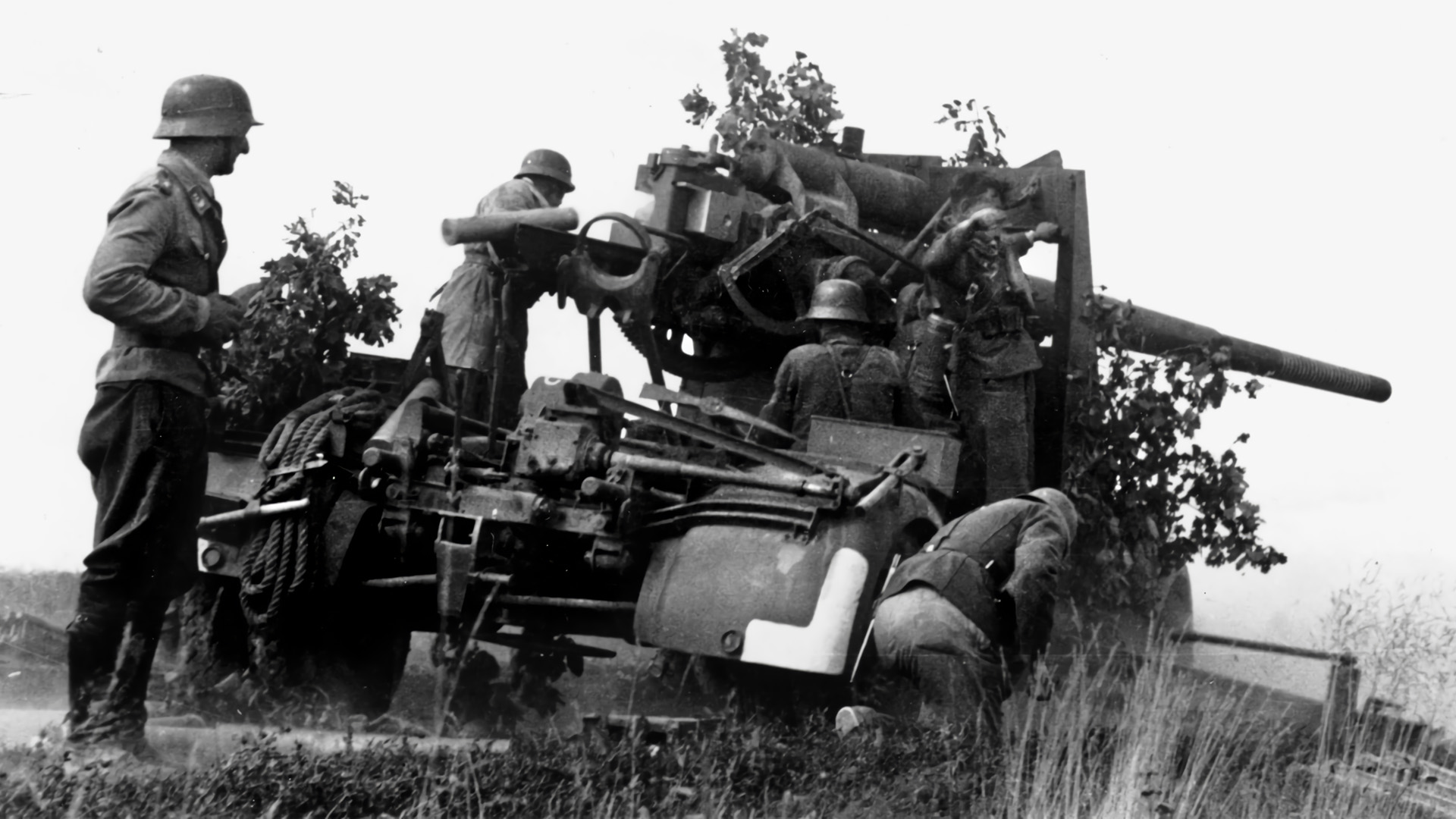
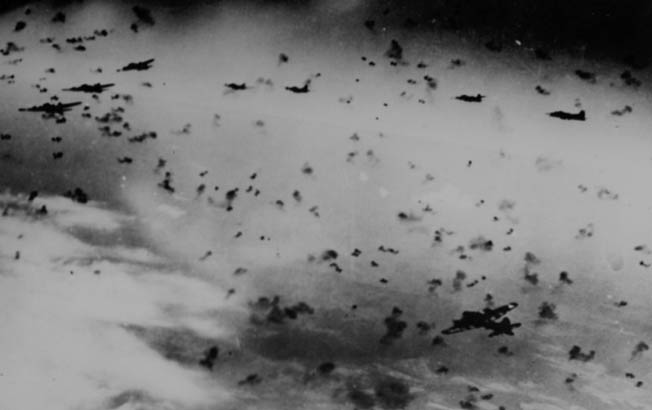
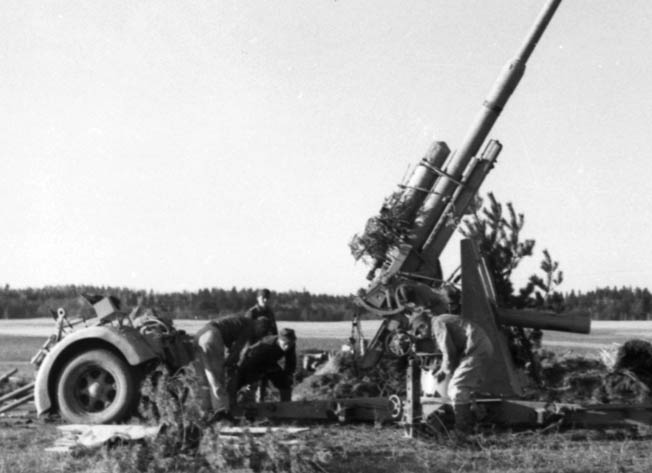
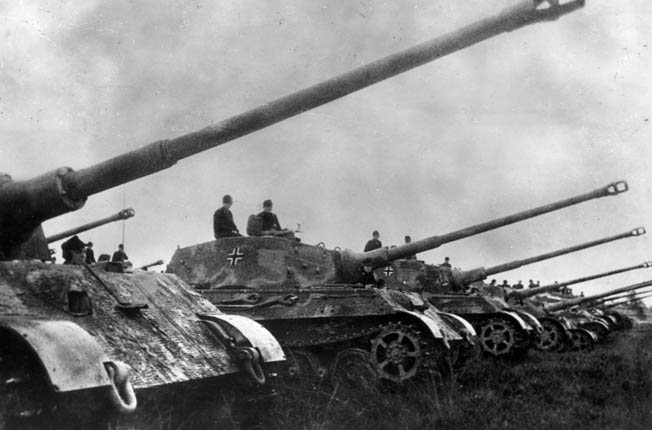
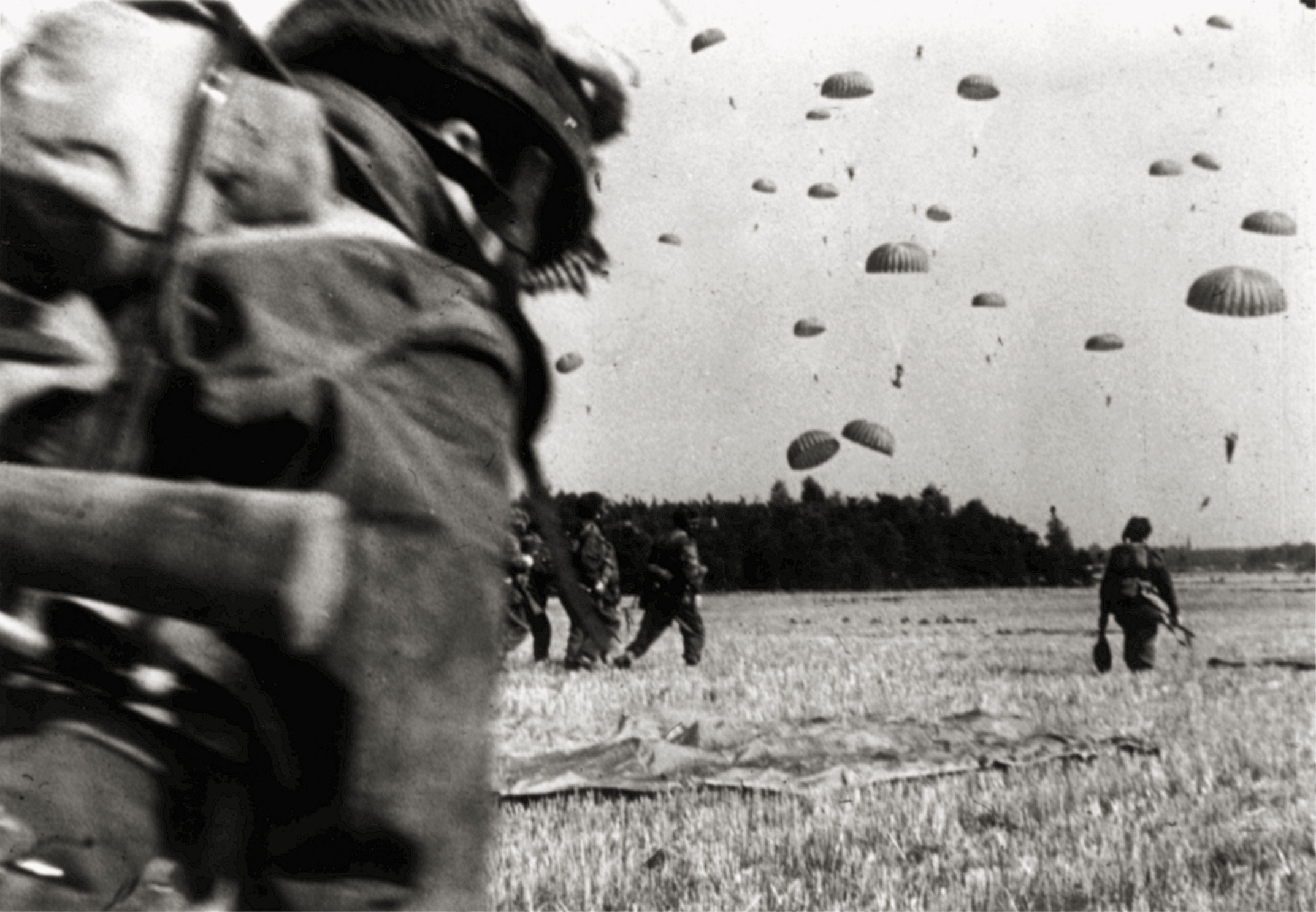
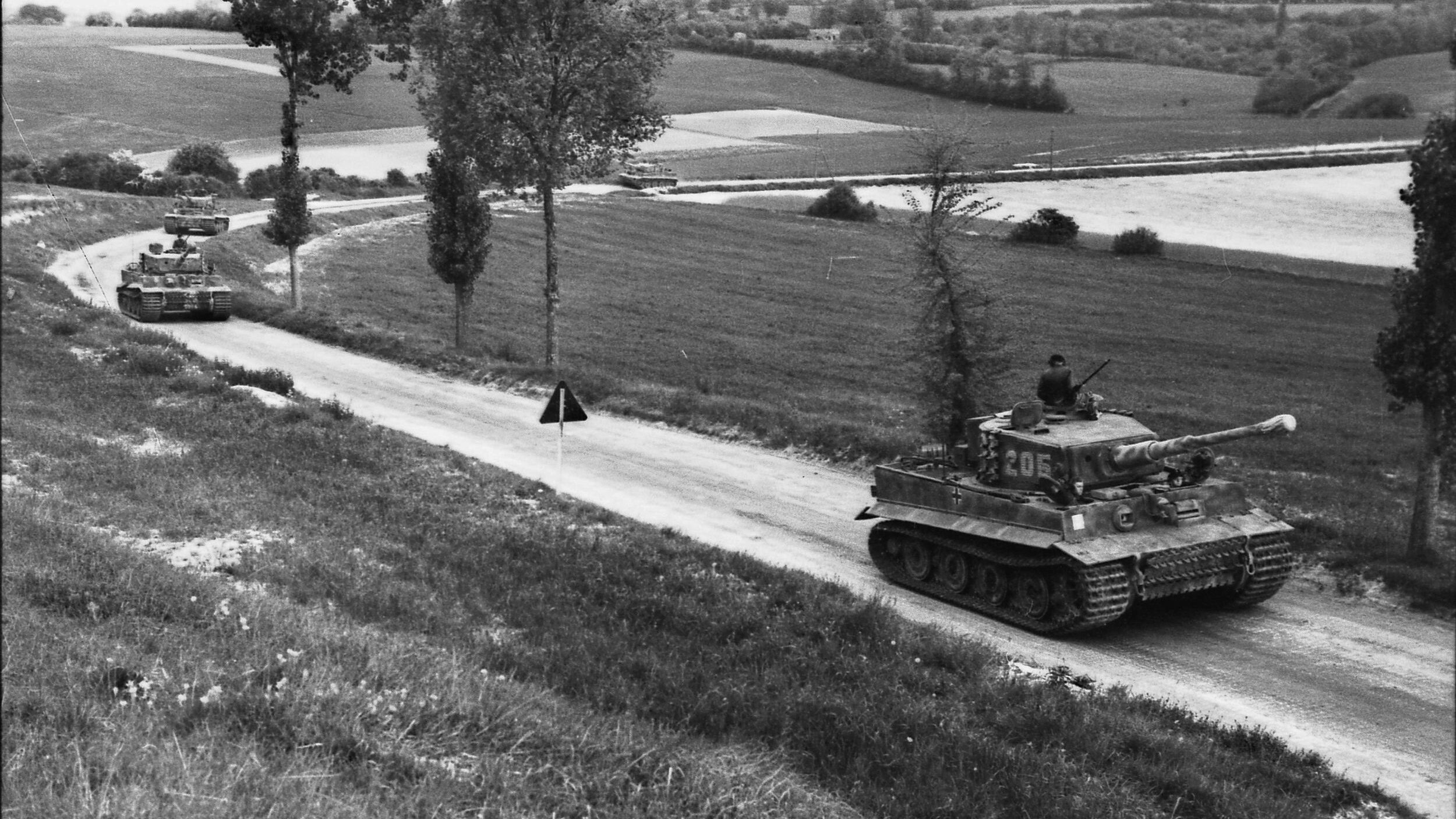
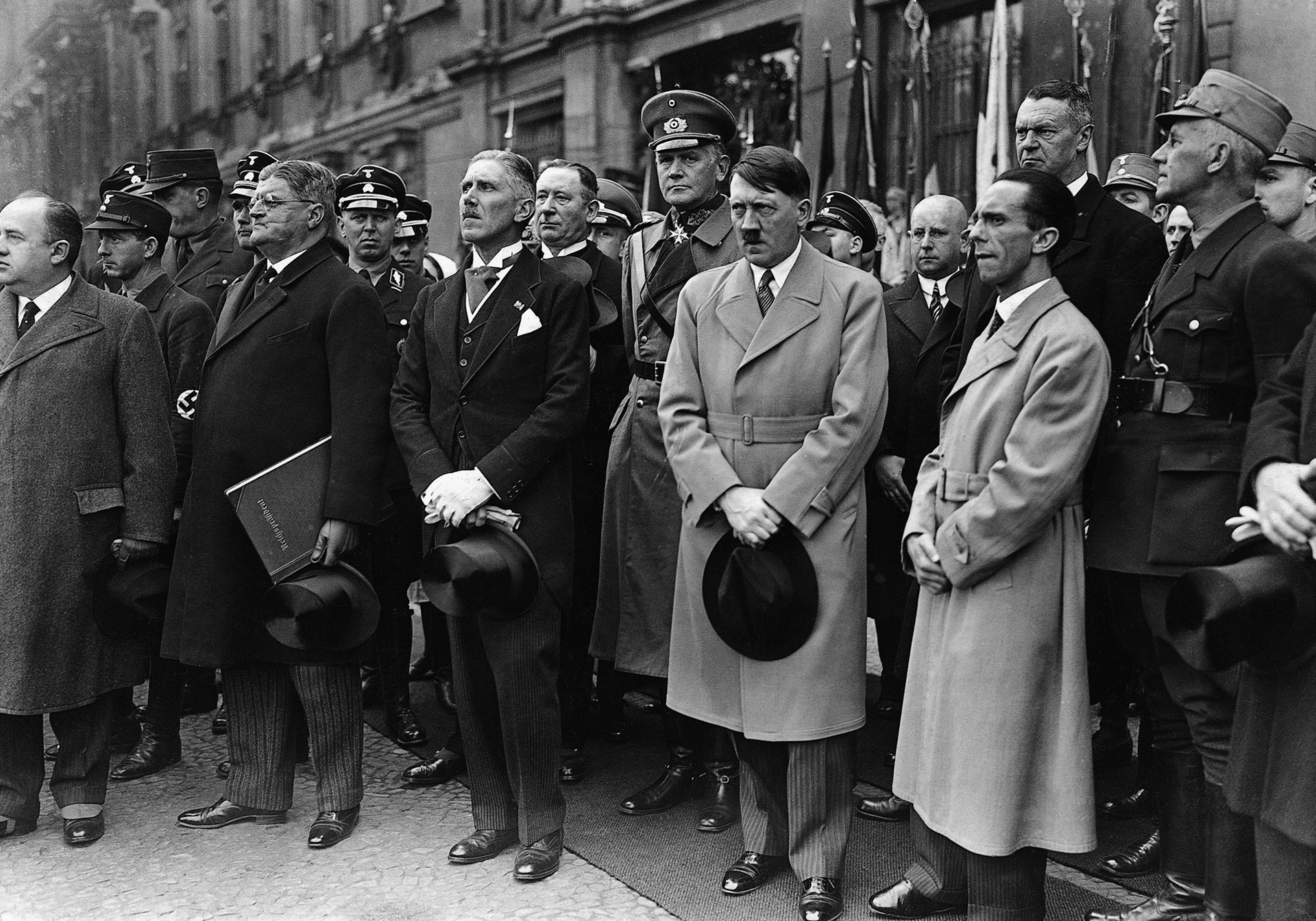
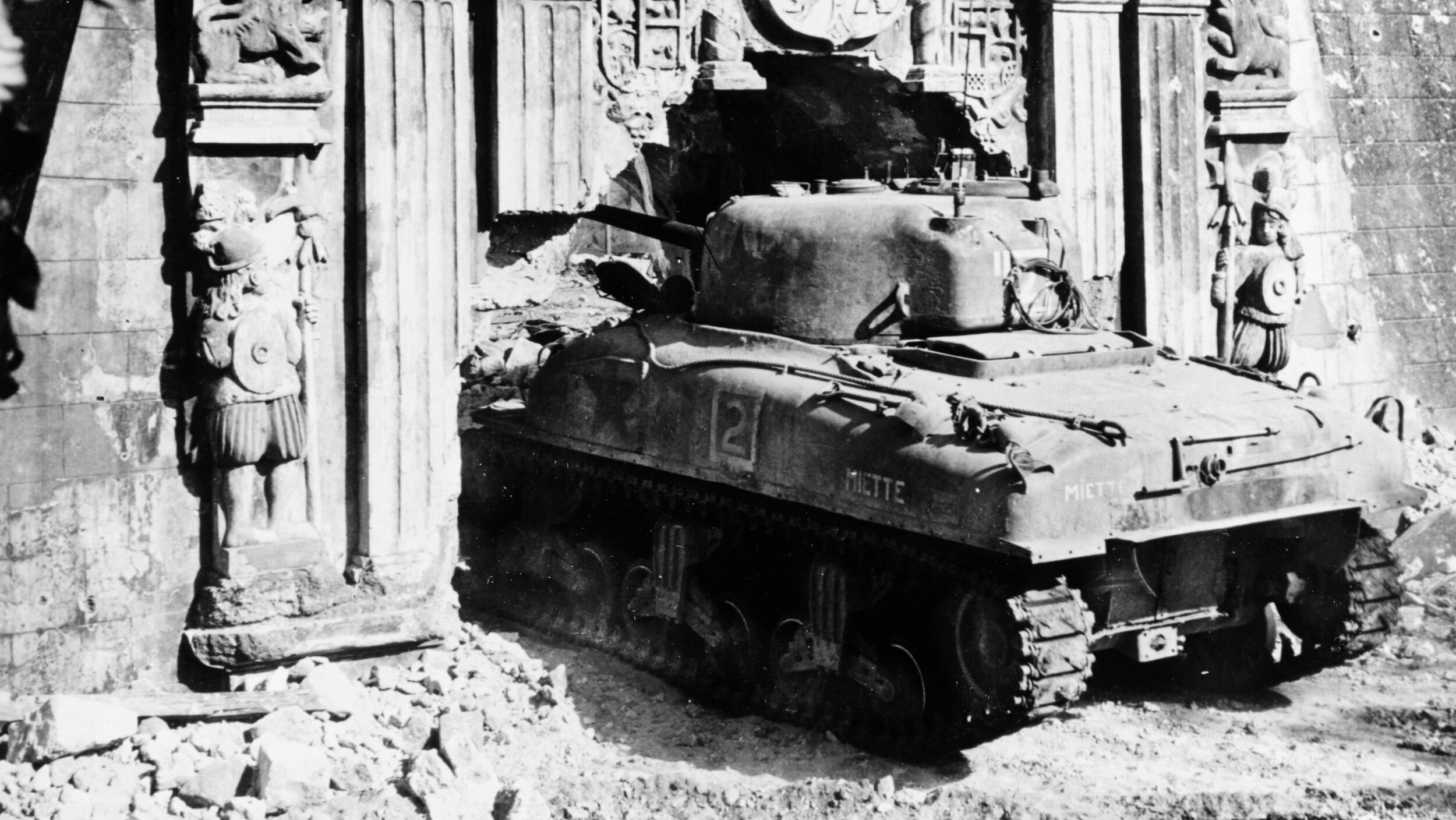

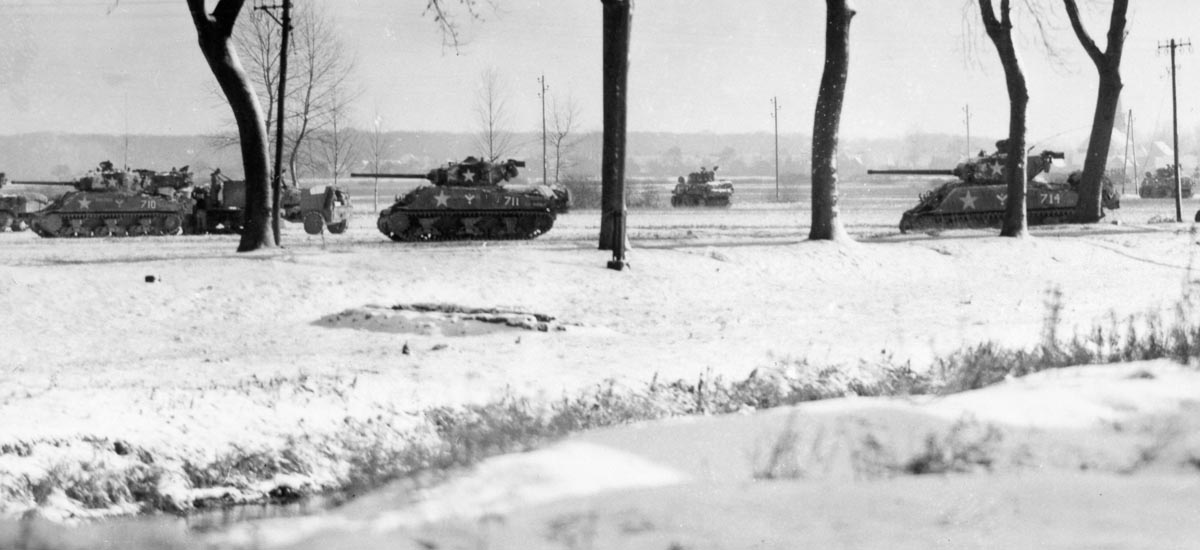
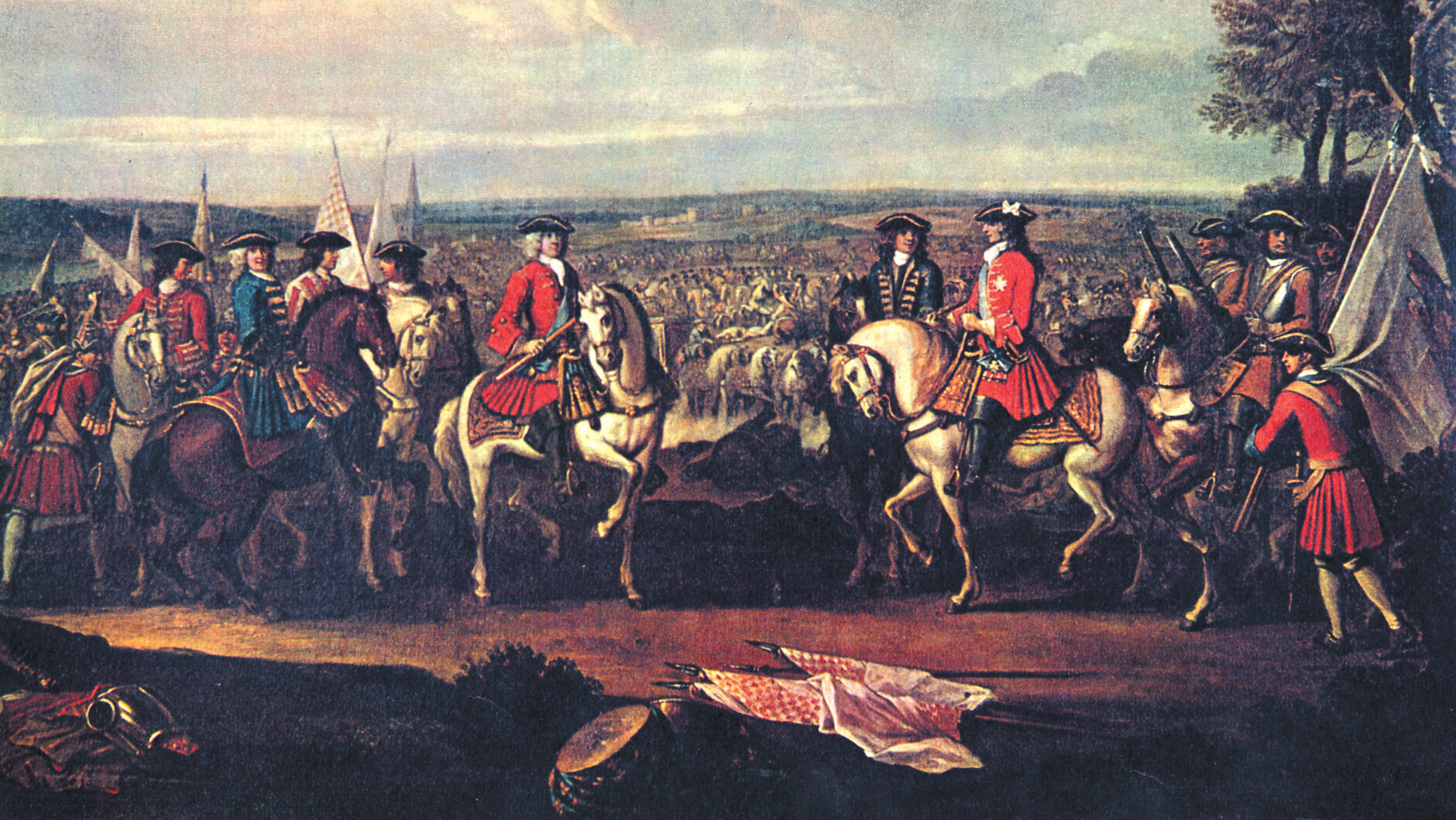
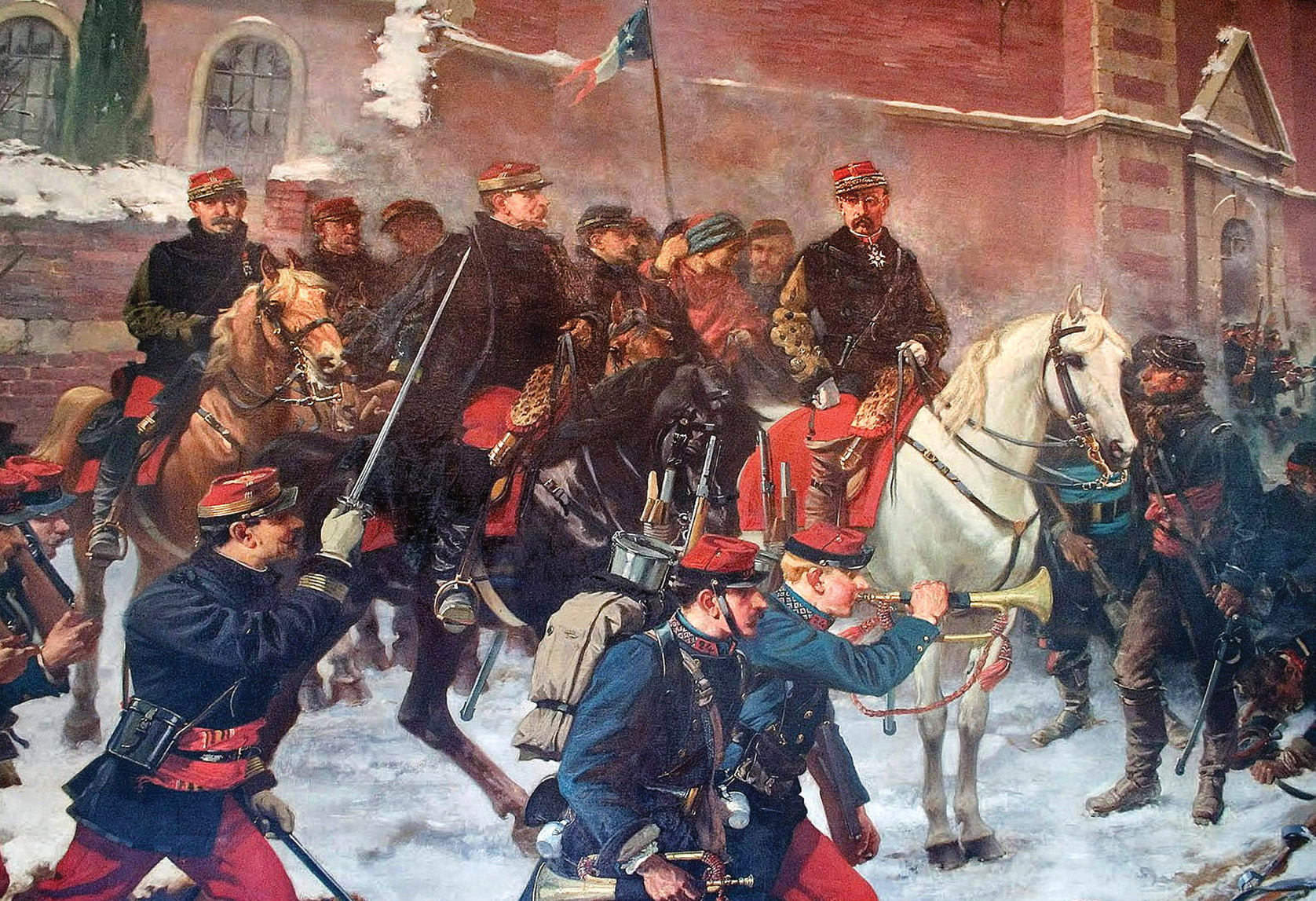
I believe that my museum here in Virginia Beach might have the only real firing German antiaircraft gun still operating. Today, we again did two demonstration shots. We had to first notify all the nearby farmers to house their horses because of the unexpected noise. It was operated by a team of reenactors dressed as German soldiers.
Gerald Yagen, President and Founder
MilitaryAviation Museum
Virginia Beach, Virginia
I don’t believe the following statement is true, perhaps he means the first 6 months of 1943? “In the first half of 1944 casualty rates for every 1,000 bomber crewmen serving six months in combat included 712 killed or missing and 175 wounded, for 89 percent.” I have been working on a book on the 381st BG, during 1944, and the casualty rate is no where near that. Of the 42 pilots for instance that flew on one per B17 during her 84 combat missions, only 2 were subsequently killed during their service and two became POWs.
I was kind of thinking the same thing. My best frind in high schools dad was a B 25 crewman over Europe. Never talked about it. For $hits and giggles his grate Uncle was John Dilinger,from his moms side. Any way fasinated with ww2 but in todays times we are on the verge of a world war that will make ww2 look like a day in the park. I hope I am wrong but I know better. May God be with us all.
Sadly, your observations are probably true. With ‘Nuclear Non Proliferation’ agreements on the verge of breaking down there is no good end in sight. Within a few short years South Korea, Taiwan, and Japan will probably acquire the capacity, to offset the threats and bullying by China and North Korea. The same will happen with Saudi Arabia and Turkey, to counter Iran.
Hello,
The first paragraph where you say, and I quote, ” American pilot Werner G. Göring, nephew of Nazi Reichsminister of Aviation Hermann Göring…” Is not accurate. There is no proof that Hermann Göring had a nephew that lived in the USA. It’s a fabricated story made up by his father Karl Goring to gain recognition in the German community within the states. My source is from the Smithsonian magazine—”In the course of writing his book, Frater discovered that Hermann Göring and Werner Goering were not related after all. It seems that Karl Goering’s kinship claims had been nothing more than a way to gain recognition in Salt Lake City’s German community, and he would never know that his false claims almost cost his son his life.” https://www.smithsonianmag.com/air-space-magazine/gorings-nephew-123292594/
I hope you edit this article. So that it doesn’t further mislead people. There is already too many lies that surround the German side of WW2, propagated by their enemies.